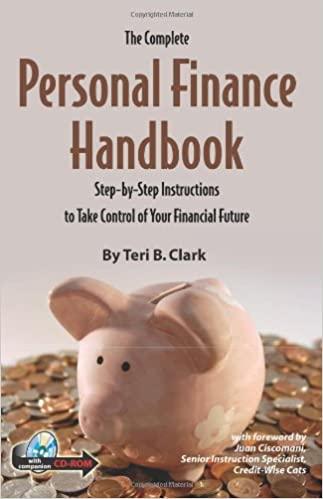Answered step by step
Verified Expert Solution
Question
1 Approved Answer
Fifteen years ago, Roop Industries sold $ 4 0 0 million of convertible bonds. The bonds had a 4 0 - year maturity, a 5
Fifteen years ago, Roop Industries sold $ million of convertible bonds. The bonds had a year maturity, a coupon rate, and paid interest annually. They were sold at their $ par value. The conversion price was set at $ and the common stock price was $ per share. The bonds were subordinated debentures and were given an A rating; straight nonconvertible debentures of the same quality yielded about at the time Roop's bonds were issued. Calculate the premium on the bonds that is the percentage excess of the conversion price over the stock price at the time of issue. Do not round intermediate calculations. Round your answer to two decimal places What is Roop's annual beforetax interest savings on the convertible issue versus a straightdebt issue? Do not round intermediate calculations. Enter your answer in millions. For example, an answer of $ should be entered as Round your answer to two decimal places.$million per year At the time the bonds were issued, what was the value per bond of the conversion feature? Do not round intermediate calculations. Round your answer to the nearest cent.$per bond Suppose the price of Roop's common stock fell from $ on the day the bonds were issued to $ now, years after the issue date also assume the stock price never exceeded $ Assume interest rates remained constant. What is the current price of the straightbond portion of the convertible bond? Do not round intermediate calculations. Round your answer to the nearest cent. Enter your answer as a positive number.$ What is the current value if a bondholder converts a bond? Do not round intermediate calculations. Round your answer to the nearest cent.$ per share Do you think it is likely that the bonds will be converted? Why or why not? I. Investors would not wish to convert the bond under any circumstances.II Yes, investors would wish to convert the bond because the value in conversion is more than the value as a bond. III. No investors would not wish to convert the bond because the value in conversion is less than the value as a bond.SelectIIIIII The bonds originally sold for $ If interest rates on Arated bonds had remained constant at and if the stock price had fallen to $ then what do you think would have happened to the price of the convertible bonds? Assume no change in the standard deviation of stock returns. Round your answers to the nearest cent. Enter all amounts as a positive number.The value of straight bond would have Selectdecreasedincreased from $ at the time of issue to $ fifteen years later. Now suppose that the price of Roop's common stock had fallen from $ on the day the bonds were issued to $ at present, years after the issue. Suppose also that the interest rate on similar straight debt had fallen from to Under these conditions, what is the current price of the straightbond portion of the convertible bond? Do not round intermediate calculations. Round your answer to the nearest dollar. Enter all amounts as a positive number.$ per bond What is the current value if a bondholder converts a bond? Do not round intermediate calculations. Round your answer to the nearest cent.$ per share What do you think would have happened to the price of the bonds? SelectThe price of the bonds will be slightly more than $The price of the bonds will be slightly less than $The price of the bonds will not change.
Convertible Bond Analysis
answer to two decimal places.
$ million per year
c At the time the bonds were issued, what was the value per bond of the conversion feature? Do not round intermediate calculations. Round your answer to the nearest cent.
$ per bond of the straightbond portion of the convertible bond? Do not round intermediate calculations. Round your answer to the nearest cent. Enter your answer as a positive number.
$ What is the current value if a bondholder converts a bond? Do not round intermediate calculations. Round your answer to the nearest cent.
$ per share
Do you think it is likely that the bonds will be converted? Why or why not?
I. Investors would not wish to convert the bond under any circumstances.
standard deviation of stock returns. Round your answers to the nearest cent. Enter all amounts as a positive number.
The value of straight bond would have from $ at the time of issue to $ fifteen years later.
$

Step by Step Solution
There are 3 Steps involved in it
Step: 1

Get Instant Access to Expert-Tailored Solutions
See step-by-step solutions with expert insights and AI powered tools for academic success
Step: 2

Step: 3

Ace Your Homework with AI
Get the answers you need in no time with our AI-driven, step-by-step assistance
Get Started


